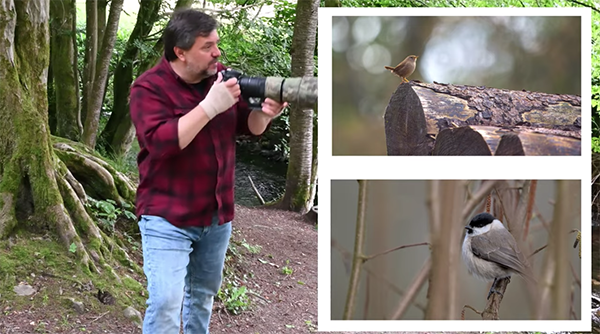
Let’s say you’ve tried all the conventional advice for capturing sharp photos, and some of your images are still soft. You use a tripod, choose the right aperture, shutter speed, and focus area, yet nothing seems to work.
This eight-minute video tutorial from an accomplished German pro demonstrates several “secrets” he’s developed throughout his 40-year career, that he says delivers pin-sharp results every time. Best yet, the unique techniques you’ll learn are likely different from those you’ve tried in the past.
Instructor Mario Kilian specializes in photographing birds—subjects that present a particularly difficult challenge when maximum sharpness is the goal. His first tip has to do with whatever filters you thread onto the front of your lens, and the advice is simple: “Don’t use them.”
Kilian’s view is that manufacturers go to great lengths to optimize the optical formula of their lenses for peak image quality and sharpness. Or as he puts it, “don’t mount a $40 filter on an expensive lens.” That’s because by doing so the sharpness of your images will be based upon the relatively cheap filter rather than the quality of a lens.
Filters do protect the lens from fingerprints and damage, but a sturdy lens hood is really all you need for that. Kilian’s second point is for DSLR users whose camera’s mirror flips up and down every time you press the shutter button. That movement creates small vibrations that may ruin the sharpness of the shot. The fix here is a unique way of holding a tripod-mounted camera with both hands; one on the body and another on the front of the lens.
Tip number three is specific to photographing birds, and this one is really easy too. This trick involves shooting from a vantage point that enables you to photograph the subject against the sky or another plain background. One reason for this is that there won’t be any branches between you and the bird that could confuse the camera’s focusing system.

But Kilian has another reason for composing photos in the manner: “The perception of sharpness with a blurry background is much higher than with a busy background.” Take a look at the examples provided and you’ll see what he means.
Kilian distaste for teleconverters is similar to his feelings about lens filters, in that there’s always a compromise in quality and sharpness—even if you use the best extenders money can buy. He has a few other suggestions that are equally effective, so watch the video and learn what they are.
There’s a lot more to learn on Kilian’s YouTube channel, especially for nature and wildlife photographers. So be sure to pay a visit when you have time.
And don’t miss the tutorial we posted from another accomplished pro recently, with a variety of simple tips for shooting dramatic landscape and nature photos.



